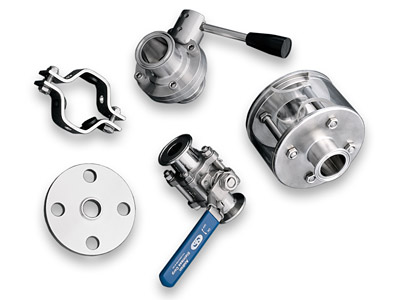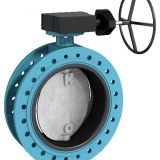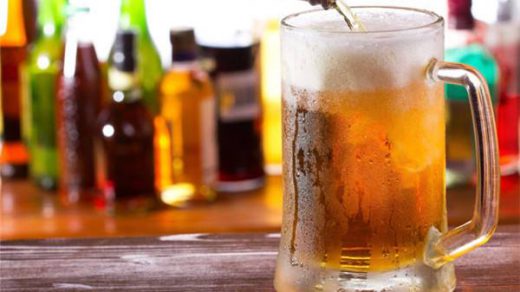There are many types of ball valves, and butterfly valves are also one of them. The difference between ball valve and butterfly valve is its opening and closing member, butterfly valve, also called flap valve, is a simple structure of the regulating valve, can be used for low pressure pipeline media switch control of the butterfly valve is the closing member is a disc, rotating around the valve shaft to achieve the opening and closing of a valve. And the ball valve is a ball. Both are rotating movement around one of their own axes.

The difference between butterfly and ball valves.
Blocking method
The ball valve blocks the channel through the ball to achieve the pipeline cut-off circulation; the butterfly valve relies on the butterfly wings, spread out to seal the pipeline will not be circulated.
Structure
The structure of ball valve and butterfly valve is different: ball valve is made of valve body, spool, stem assembly, the valve body can only see part of the parts; butterfly valve is made of valve body, valve seat, valve plate, valve stem, all accessories are exposed outside. So it can be seen that the sealing of butterfly valve is not as good as that of ball valve. When it comes to sealing, butterfly valves are also divided into soft seal and hard seal. The structure of butterfly valve is relatively simple and can only be used in low-pressure environment, and the maximum pressure is only 64 kg. Compared to ball valves, which can reach up to about a hundred kilograms.
Working Principle
The working principle of ball valve and butterfly valve is different: the ball valve has 90 degrees of rotation action, only because his opening and closing parts are a sphere, only need to operate 90 degrees of rotation to achieve open or close, the most suitable for doing switch. But now the V-shaped ball valve can be used to regulate or control the flow. The butterfly valve is a valve that opens, closes or regulates the flow of the medium with the reciprocal rotation of the disc type opening and closing member by about 90°, which has a good function of regulating the flow and is considered one of the fastest growing varieties of valves.
Uses
1, ball valves: can be used for fluid regulation and control, including hard seal V ball valves with a strong shear force between the V-shaped ball core and the metal seat of the welded carbide, especially for media containing fibers, tiny solid particles. And multi-way ball valve in the pipeline can not only be flexible control of media merging, diversion, and switching of flow direction, but also can close any channel and make the other two channels connected.
2, Butterfly valve: the valve can be used to control the flow of various types of fluids such as air, water, steam, various corrosive media, slurry, oil, liquid metal and radioactive media. In the pipeline mainly plays the role of cutting off and throttling. Butterfly valve opening and closing member is a disc-shaped butterfly plate, which rotates around its own axis in the valve body, so as to open and close or regulate the purpose.
Through such a comparison, the selection of the valve actually has many elements to consider, but according to the use of the valve, the nature of the valve medium, the valve operating pressure, the valve operating temperature, the valve installation size and shape size requirements, etc., are the key factors in the selection of the valve.




Recent Comments